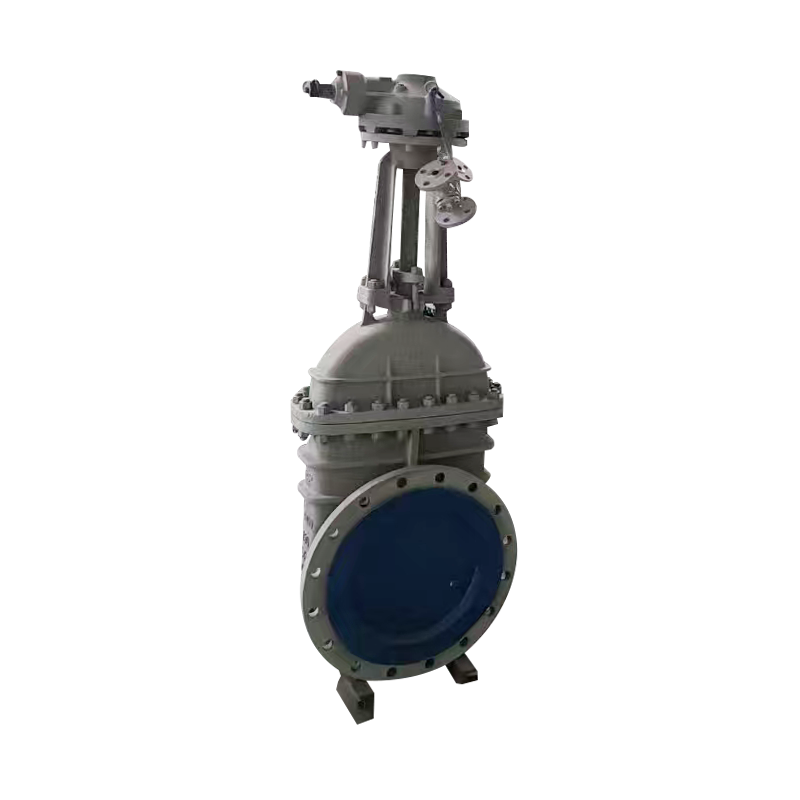
The High Temperature Cast Iron ANSI Gate Valve is a reliable component used in fluid control systems where temperature resistance and durability are required. Found in various industries, including heating, steam, and industrial processing, this valve is recognized for its straightforward operation, particularly its simple opening and closing process. The design and material selection of the valve contribute to long service life and consistent functionality, especially in systems exposed to elevated temperatures.

The High Temperature Cast Iron ANSI Gate Valve operates using a rising or non-rising stem mechanism. When the valve is opened, the gate (a flat or wedge-shaped disk) lifts vertically from the path of the flow. When the valve is closed, the gate lowers into place to block the flow completely. This linear motion is controlled by turning a handwheel or applying actuator-driven torque to the stem. The movement is direct and easy to control, which contributes to its popularity in systems that do not require fast actuation or frequent operation.
One of the defining features of the High Temperature Cast Iron ANSI Gate Valve is the minimal flow resistance when fully open. Because the gate retracts completely from the flow path, the valve allows full-bore flow with minimal pressure drop. This design makes it particularly suitable for high-flow systems where smooth and unobstructed passage is required. Conversely, when fully closed, the gate seals tightly against the valve seats, preventing any flow and ensuring dependable shut-off.
Cast iron is selected for the valve body because of its thermal stability, strength, and cost-efficiency. The material withstands high temperatures without significant deformation or expansion, making it suitable for steam and hot water systems. The High Temperature Cast Iron ANSI Gate Valve typically complies with ANSI (American National Standards Institute) dimensions and pressure ratings, which ensures compatibility with standardized piping systems and fittings.
The simplicity of the valve's opening and closing process lies in its mechanical efficiency. Turning the handwheel raises or lowers the gate via the threaded stem. The operator can control the process gradually, making the valve ideal for applications where precise shut-off or slow system pressurization is necessary. In installations, the valve is either fully open or fully closed to prevent seat wear and ensure performance.
Maintenance of the High Temperature Cast Iron ANSI Gate Valve is relatively straightforward due to its uncomplicated internal design. The gate, stem, bonnet, and sealing components can typically be accessed and serviced without requiring extensive system downtime. In high-temperature environments, materials such as graphite or metal-reinforced gaskets are often used to preserve seal integrity and prevent leaks.
In systems that experience thermal cycling, the High Temperature Cast Iron ANSI Gate Valve maintains consistent operation. Its durable construction and minimal moving parts reduce the likelihood of thermal distortion affecting performance. Furthermore, the valve's robust body and bonnet design resist cracking and wear over extended periods of use.
The High Temperature Cast Iron ANSI Gate Valve is also used in applications involving non-corrosive liquids and gases. Its ability to function reliably under elevated temperatures makes it suitable for heating systems, boiler feed lines, and industrial processes involving hot media. While the valve is not typically used for throttling due to the potential for seat damage, it excels in applications where full open or full close functionality is required.
In automated systems, the High Temperature Cast Iron ANSI Gate Valve can be paired with electric or pneumatic actuators. Although manual operation is common, automation enables integration with modern control systems, improving efficiency and safety in high-temperature environments.

